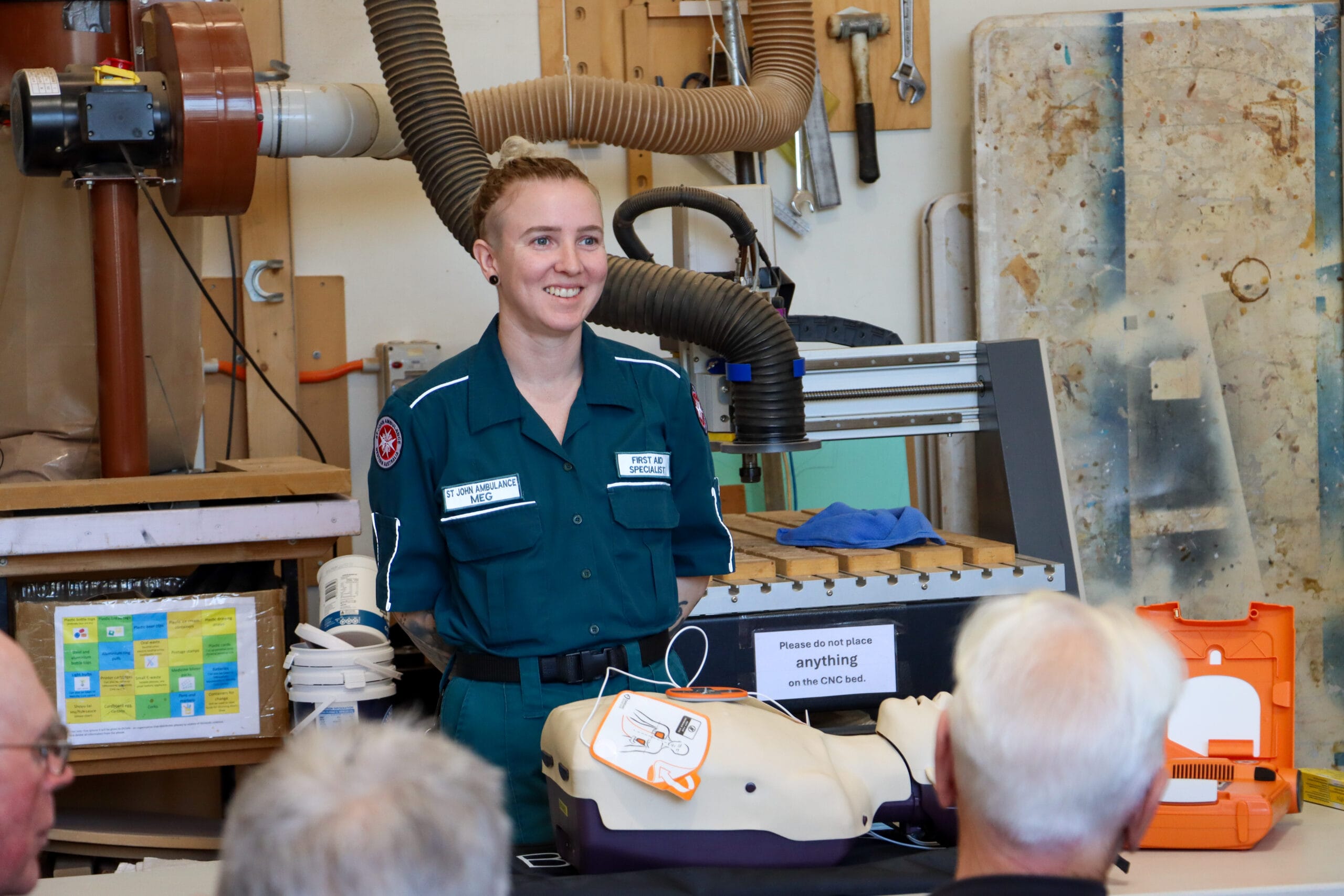Manning Men’s Shed equipped on Automatic External Defibrillator (AED) use after cardiac arrest scare
- Cardiac arrest victims will be unconscious but can still appear to be breathing
- An AED will not deliver a shock to a person with a regular pulse so can be applied safely;
- For the month of Shocktober, remember to Call (Triple Zero (000)). Push (on the chest). Shock (with a nearby AED).
Graham Rennie is a pretty fit 73-year-old, who exercises regularly, likes to cycle between his Como home and Manning Men’s Shed and keep up with his grandchildren over the school holidays.
But the Manning Men’s Shed president quickly learned sudden cardiac arrest could still apply to him on a warm day in May when he repeatedly fainted, much to the shock of the men around him.
“I was watching a demonstration when I felt a bit weird and fainted on the work bench, and even though they woke me up I did it again,” Mr Rennie said.
“One of the guys went and grabbed a defib but they were not sure whether to use it, which they were talking through to Triple Zero (000).”

St John WA (SJWA) Resuscitation Improvement Specialist Jason Belcher said AEDs have been designed not to deliver a shock to anyone with a regular pulse, so there is no harm in attaching the pads of an AED to the chest of a suspected cardiac arrest patient if you are unsure.
“Patients in cardiac arrest will be unconscious, but sometimes when the heart stops suddenly patients can still have what appears to be gasping or laboured breathing for a few minutes. We call this agonal breathing, and it can confuse people because they think the patient is still breathing.” Mr Belcher said.
“The key message is, if someone is unconscious and not breathing normally, they should be treated as if they are in cardiac arrest. This means calling Triple Zero (000) and following the instructions on the call – which may include performing CPR and using an AED if available.
Mr Belcher, who is also a registered paramedic, said AEDs cannot hurt someone.
“It simply will not deliver a shock if it’s not needed,” he said.
The biggest harm is to have an AED and not use it, as a cardiac arrest patient with agonal breathing still needs a defibrillation shock in those vital first minutes.
“AEDs are designed for anybody to be able to use even if you’re not trained – as soon as you turn it on or open it up it will tell you exactly what to do.”
SJWA paramedics arrived and monitored Mr Rennie’s heart and took him to hospital for further scans and checks.
Thankfully Mr Rennie’s case turned out to be a severe case of dehydration, but it reminded the Manning Men’s Shed to brush up on their first aid skills.
“It was very unsettling for a number of the guys and they were shocked I suppose as they really didn’t have enough information about what to do,” Mr Rennie said.
Thanks to funding from Member for South Perth Geoff Baker, the Manning Men’s Shed received a St John WA Defibrillator Demonstration during the month of Shocktober, which is dedicated to promoting the importance of AED use in the event of sudden cardiac arrest.
SJWA is committed to improving CPR and AED use in the community as it has been proven vital in saving lives.
Established in 2011, SJWA’s Community First Responder Program is a free service which aims to get defibrillators registered on the State Defibrillator Network to cardiac arrest victims in the vital minutes before an ambulance arrives.
Locations of the registered defibrillators are listed here and on the St John First Responder app.
This month, remember to Call (Triple Zero (000)). Push (on the chest). Shock (with a nearby AED).
